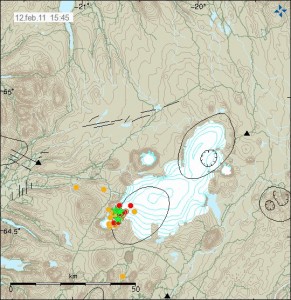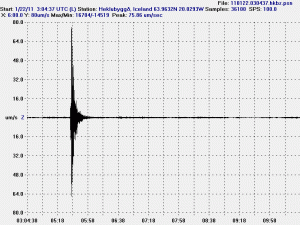A earthquake swarm of 70 something earthquakes have been taking place close to Presthnjúkar volcano in Iceland. This activity is tectonic in nature and is because of the rift zone. This volcano is located close to south end of Langjökull glacier, but Langjökull glacier covers two volcanoes (north Hveravellir and south Presthnjúkar). One at the north end and a other at the south end. This volcano last erupted in the year 3500 BC (?) according to GVP.

Picture is from Icelandic Met Office web page. Copyright belongs to them.
The earthquake swarm in south Langjökull volcano.
Earthquake swarms are common in this area and happen regularly. But last large earthquake swarm in this area was in June 2009. The largest earthquake that did happen today was felt in nearby area according to Icelandic news.
Icelandic news about this earthquake swarm. Use Google Translate at own risk.
Skjálftahrina á milli Langjökuls og Þórisjökuls (Vísir.is)
Jarðskjálftahrina í Langjökli (Rúv.is)

